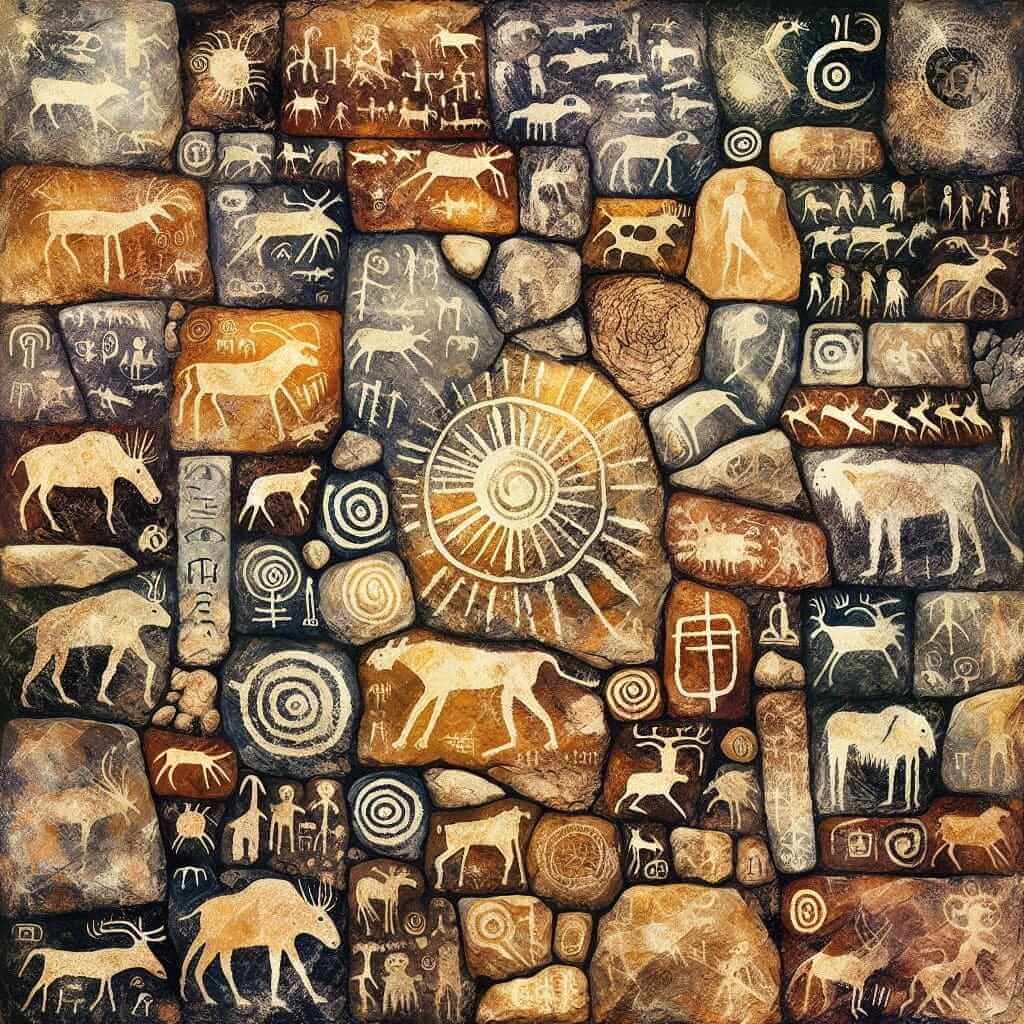Introduction: The Significance of Ancient Writing Systems in IELTS
The evolution of writing systems is a fascinating topic that often finds its way into IELTS readings and discussions. Understanding the origins of writing can enrich your vocabulary, enhance your comprehension of historical texts, and provide you with intriguing talking points for the speaking test.
Theories Abound, Answers Remain Elusive: Why “How Did Writing Begin?” is a Complex Question
While we have a wealth of archaeological evidence and numerous theories, pinpointing the exact origin of writing remains a scholarly puzzle. This ambiguity is precisely what makes it a compelling subject for IELTS. Let’s delve into some of the prevalent theories:
1. Pictograms and Ideograms: The Seeds of Writing?
Many scholars believe that writing emerged from simpler forms of visual communication.
- Pictograms: Early humans used drawings to represent objects directly. Think of cave paintings depicting animals or hunting scenes.
- Ideograms: These symbols evolved to represent abstract concepts. For instance, a drawing of the sun could symbolize “day” or “light.”

2. The Mesopotamian Cuneiform: A Strong Contender
Cuneiform, developed by the Sumerians around 3200 BC, is often cited as one of the earliest writing systems. It involved pressing wedge-shaped marks into clay tablets. Cuneiform initially used pictograms but gradually incorporated phonetic elements.
3. Egyptian Hieroglyphs: Beauty and Complexity
Emerging around the same time as cuneiform, hieroglyphs were a sophisticated system combining logographic (word-based) and phonographic (sound-based) elements. The ornate symbols, often found on tomb walls and papyrus scrolls, have captivated imaginations for centuries.
Why Few Definitive Answers Exist: The Challenges of Archaeological Interpretation
The study of ancient writing systems is an ongoing process. New discoveries are constantly reshaping our understanding. Here are some reasons why definitive answers remain elusive:
- Limited Archaeological Evidence: Not all writing materials survive the ravages of time.
- Difficulties in Deciphering: Some ancient scripts remain undeciphered, their secrets locked away.
- Multiple Origins: It’s possible that writing emerged independently in different parts of the world.
IELTS Preparation: How to Tackle Writing Origins
- Expand Your Vocabulary: Familiarize yourself with terms like “pictogram,” “ideogram,” “cuneiform,” “hieroglyph,” “script,” and “logographic.”
- Read Widely: Explore articles and books about ancient civilizations and the history of writing.
- Practice Paraphrasing: Being able to rephrase information about writing systems is crucial for both the writing and speaking sections of the IELTS exam.
Example IELTS Speaking Question:
Examiner: “Some people believe that the invention of writing was the most important event in human history. Do you agree or disagree?”
Tips for Answering:
- Acknowledge the complexity of the issue. You could say, “That’s a fascinating question. While it’s difficult to rank historical events in order of importance…”
- Provide a balanced response, discussing both the benefits and potential drawbacks of writing.
- Use relevant vocabulary and examples from your reading to support your points.
Conclusion: Embracing the Enigma
The question of how writing began might not have one clear answer, but the journey of exploration is what makes it so captivating. By delving into the various theories and evidence, you’ll not only be prepared for potential IELTS topics but also gain a deeper appreciation for the evolution of human communication.